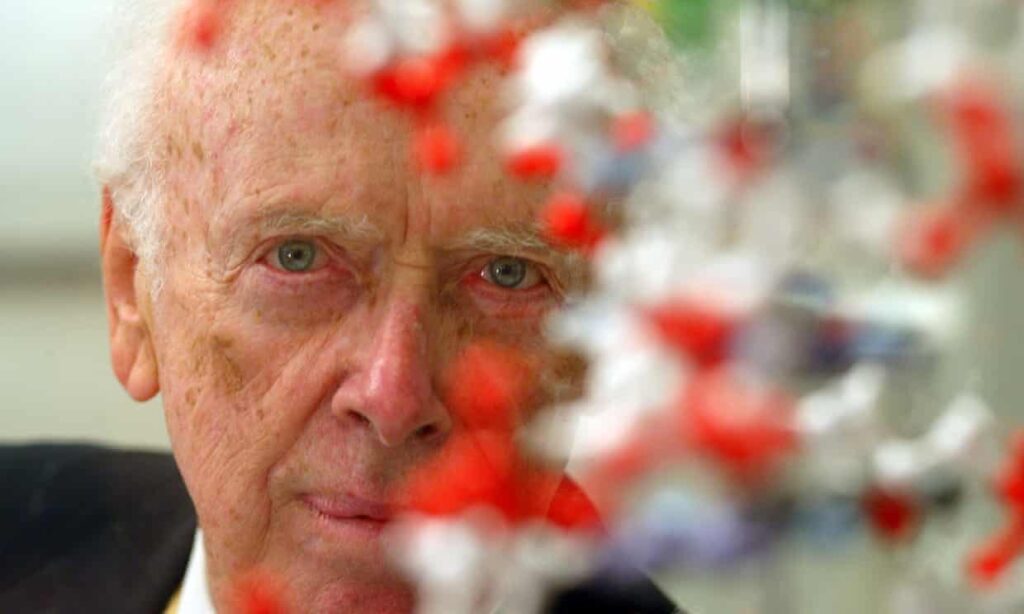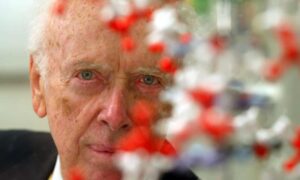
James Watson, the co-discoverer of the structure of DNA, passed away on November 6, 2025, at the age of 97. His groundbreaking work alongside Francis Crick in 1953 at Cambridge University transformed biological sciences, earning him a Nobel Prize and a complex legacy characterized by both remarkable achievement and significant controversy.
Watson and Crick unveiled the structure of deoxyribonucleic acid (DNA), a discovery that elucidated the chemical basis of heredity. Their work demonstrated that genetic information is encoded in DNA, composed of four nucleotide bases: adenine (A), thymine (T), guanine (G), and cytosine (C). This revelation not only reshaped the understanding of biology but also catalyzed advancements across various fields, including medicine, archaeology, and forensic science.
The pivotal moment came on February 28, 1953, when Watson described how Crick entered the Eagle pub in Cambridge, declaring, “We have discovered the secret of life.” Their research at the Cavendish Laboratory led to the identification of DNA’s double helix structure, a breakthrough that has been hailed as one of the greatest scientific achievements.
Early Life and Academic Journey
Born in Chicago on April 6, 1928, Watson demonstrated exceptional academic talent from a young age. He enrolled at the University of Chicago at just 15 years old, where he developed an interest in genetics. His early research included working under the guidance of Hermann Muller, who played a significant role in modern genetics, particularly in establishing the concept of gene mutation.
Watson’s journey eventually brought him to Europe, where he seized an opportunity to work at the Cavendish Laboratory in 1951, coincidentally alongside Crick. Their partnership was marked by a fusion of contrasting personalities: Watson’s ambitious and often brash demeanor complemented Crick’s more reserved, methodical approach. Together, they pursued the structure of DNA, employing model-building techniques and X-ray diffraction data that had been gathered by others.
Their significant publication in the journal Nature included a now-famous understatement regarding the implications of their findings: “It has not escaped our notice that the specific pairing we have postulated immediately suggests a possible copying mechanism for the genetic material.” This work led to the trio, including biophysicist Maurice Wilkins, receiving the Nobel Prize in Physiology or Medicine in 1962.
Legacy and Controversy
Watson’s career continued with various prominent roles, including directorship at the Cold Spring Harbor Laboratory in New York, where he became known for his advocacy of basic scientific research. His leadership was pivotal in revitalizing the laboratory, steering it into research areas such as tumor virology and molecular biology.
In 1990, Watson became head of the ambitious Human Genome Project, aimed at mapping the entire human genome. Despite initial skepticism about its feasibility, the project led to groundbreaking advancements in genetics and paved the way for new scientific disciplines, including genomics and bioinformatics.
Despite his scientific contributions, Watson faced significant backlash due to controversial statements regarding intelligence and race. In 2007, he suggested that social policies were flawed due to assumptions about equal intelligence among different races, leading to widespread condemnation and his resignation from Cold Spring Harbor. His remarks highlighted the tension between scientific inquiry and ethical considerations in genetics.
In a final controversial act, Watson auctioned his Nobel medal for $4.1 million in 2014, stating that he sought to re-enter public life. Yet, he continued to provoke outrage when he reiterated his previous views in a 2019 PBS documentary, resulting in further censure from the scientific community.
Watson’s complex legacy reflects both the heights of scientific achievement and the depths of ethical missteps. He is survived by his wife, Elizabeth, their sons, Rufus and Duncan, and a grandson. His contributions to science will endure, even as debates about his views and behavior continue to evoke strong reactions. The world of science remembers James Dewey Watson not just as a pioneering scientist but as a figure whose life story encapsulates the duality of human ambition: the drive for discovery intertwined with the responsibility of ethical conduct.






